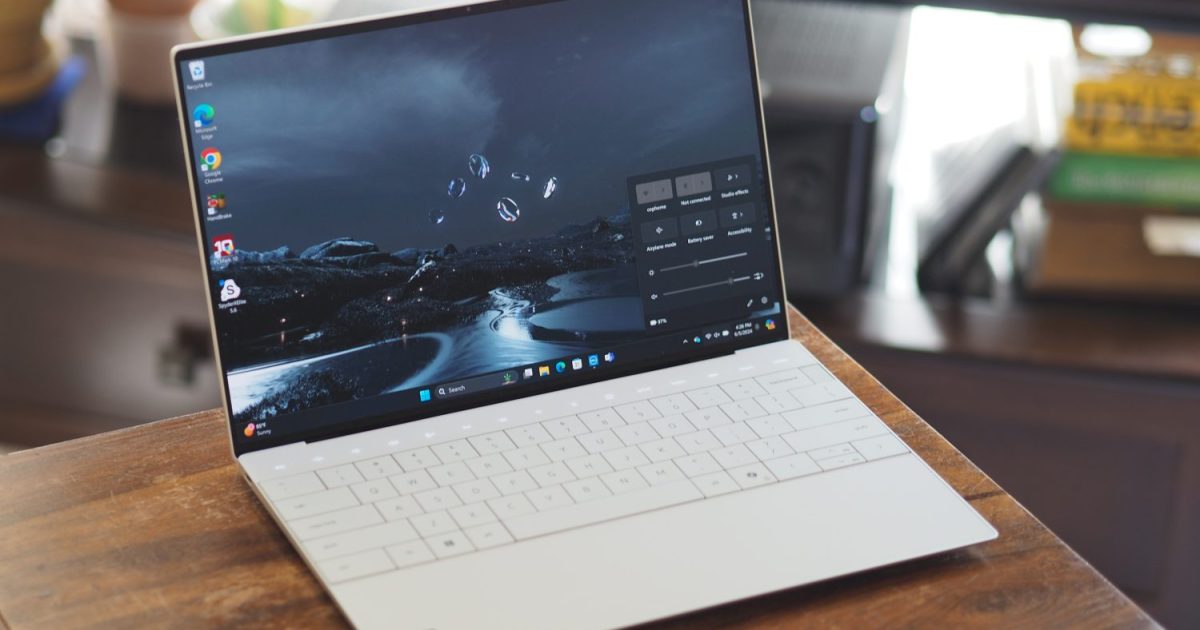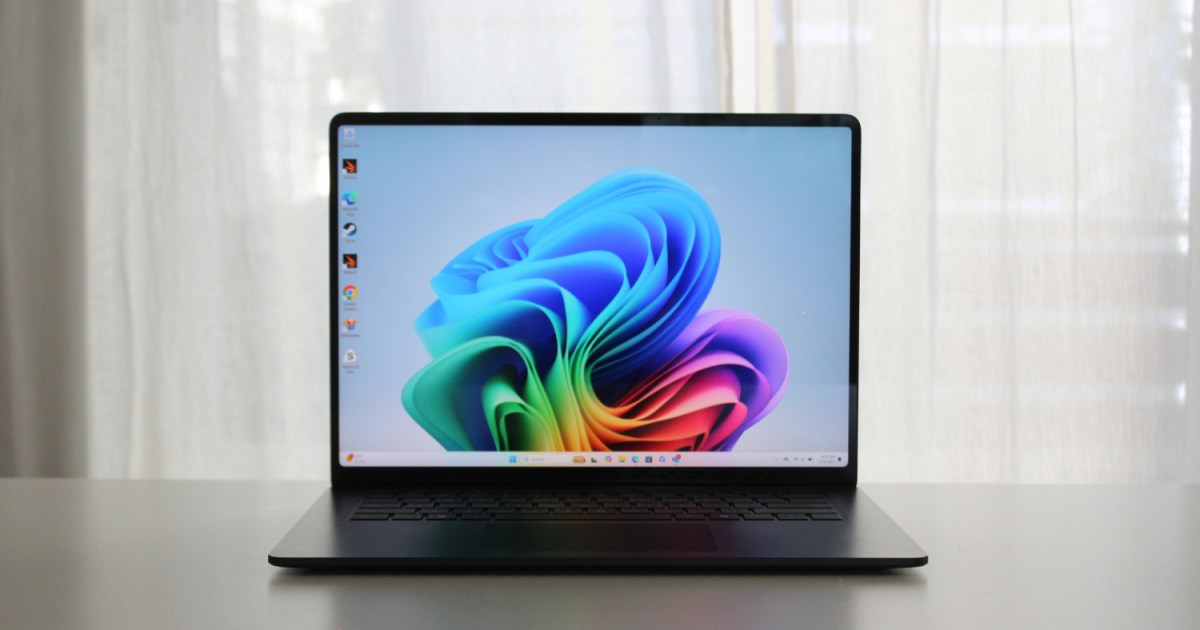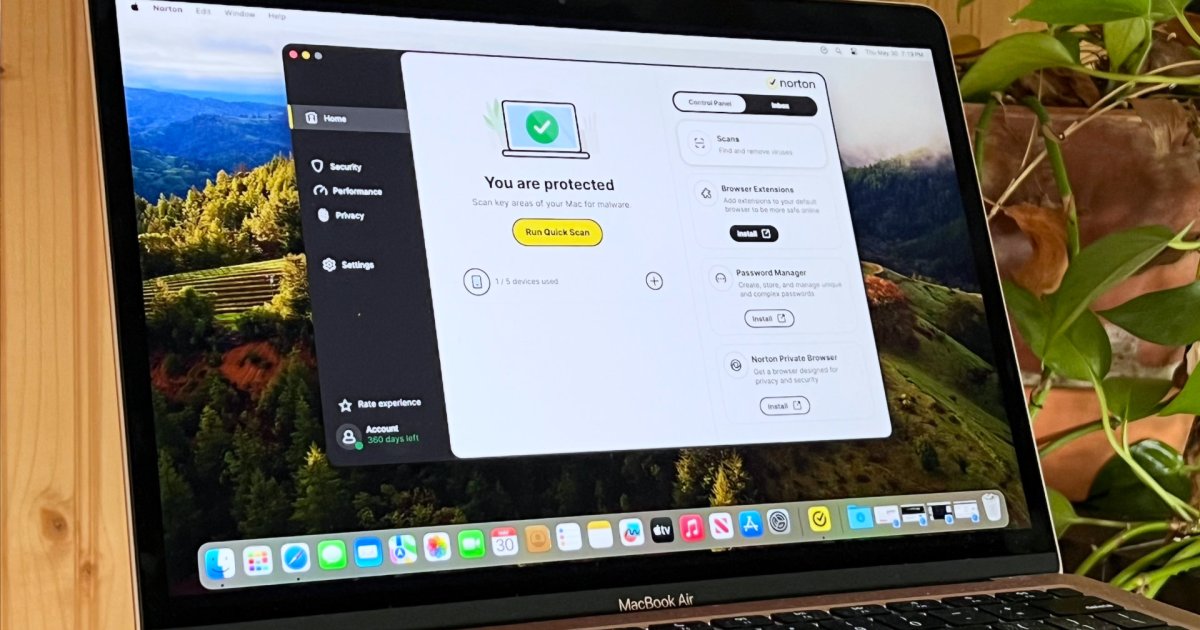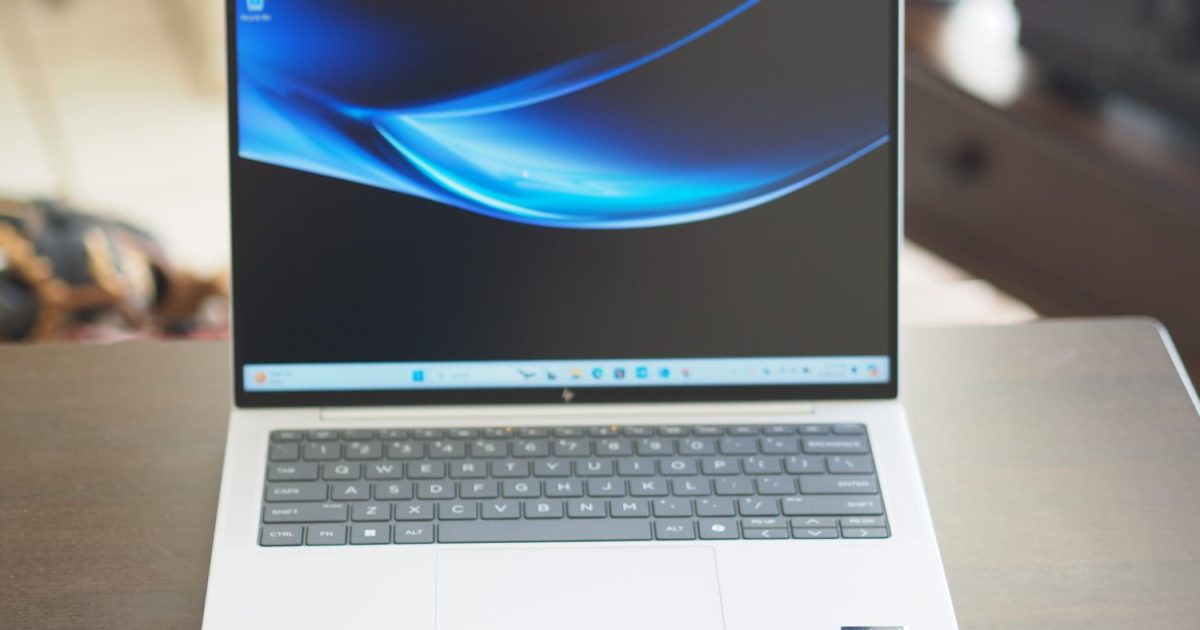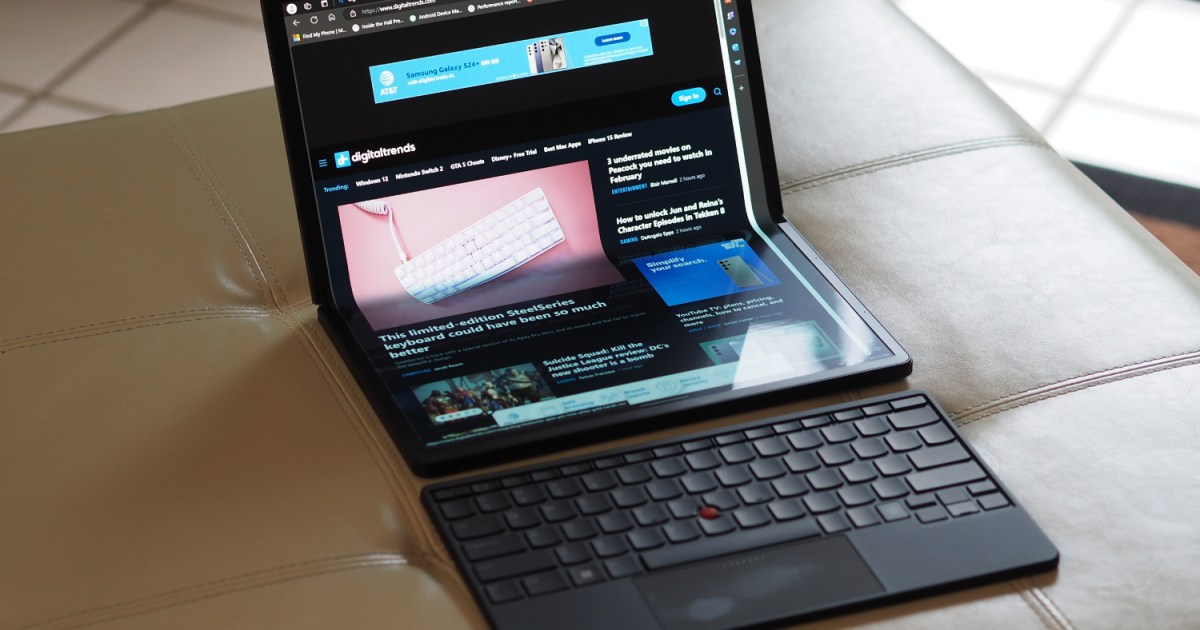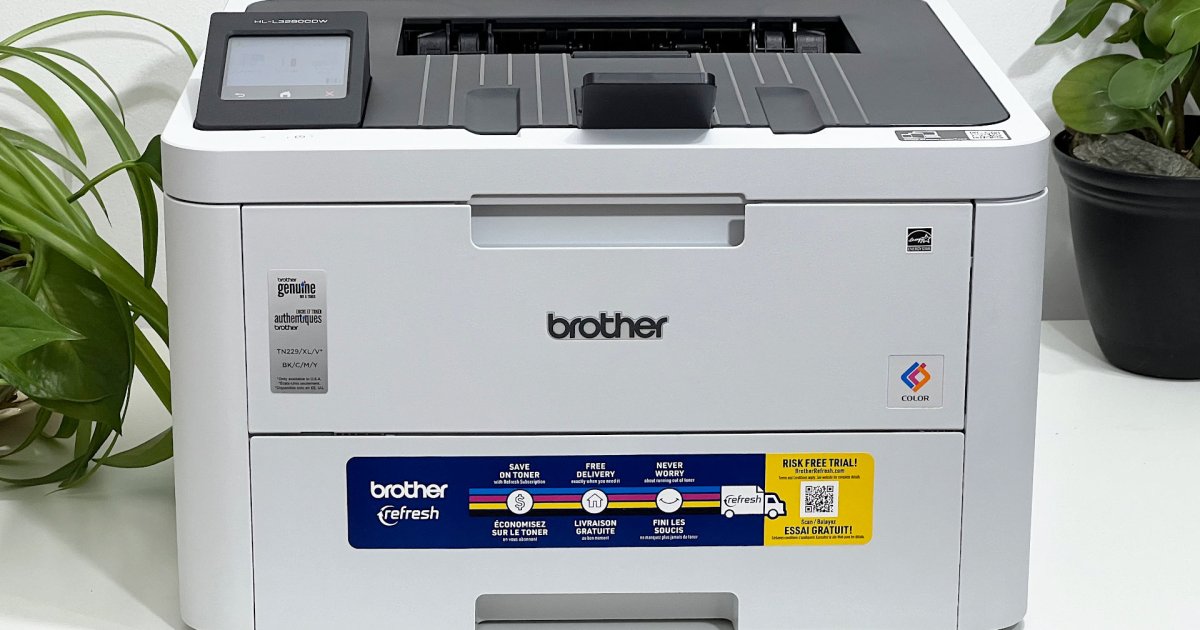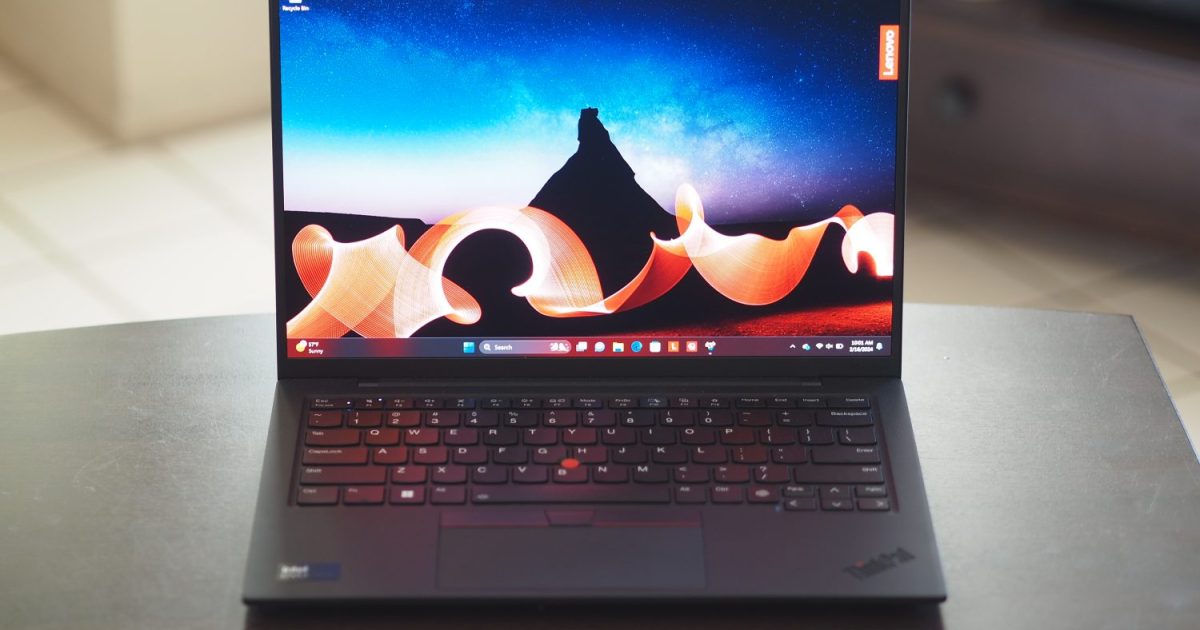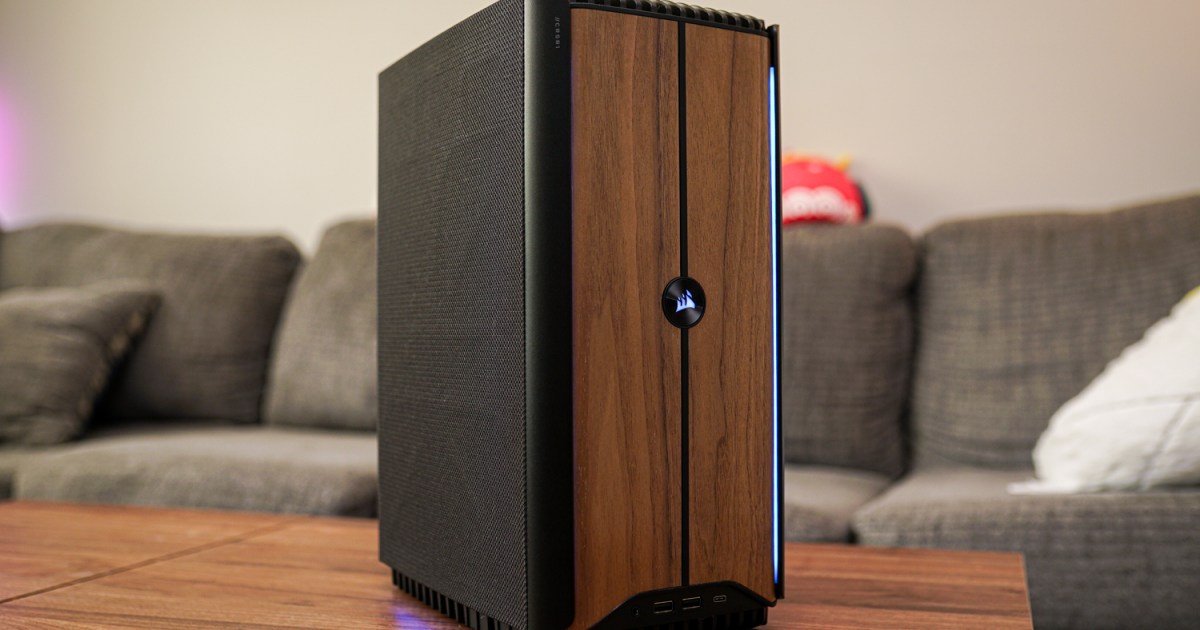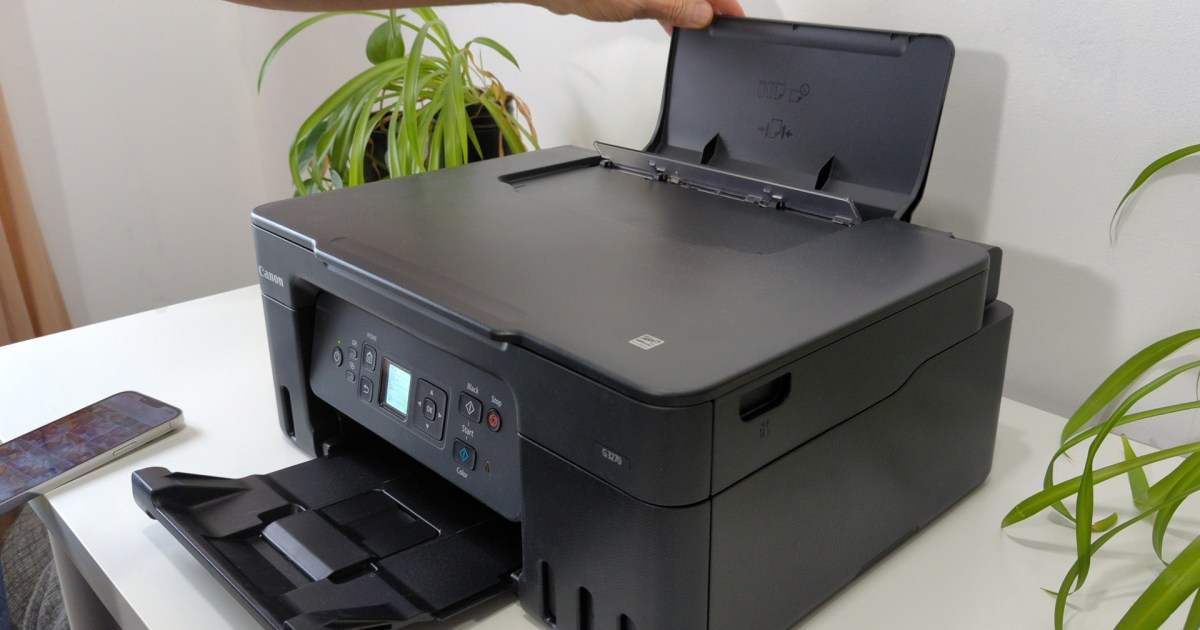It’s a challenging time to assess or purchase a laptop. Microsoft’s Copilot+ PC initiative is gaining momentum, introducing machines powered by Qualcomm’s Snapdragon X chipsets. These promise impressive performance and unparalleled efficiency for Windows laptops. However, Windows on Arm isn’t for everyone, and Intel’s Meteor Lake chipset still holds its own – at least for the next few months.
The latest Dell XPS 13 belongs to this “previous generation” of Windows laptops, yet it retains its appeal for many. Currently, it’s among the top 13-inch laptops available. This excellent machine boasts strong performance and a superb display. If those are your priorities today, it’s a solid choice. However, the impending arrival of Copilot+ models later this month might give prospective buyers pause.
Specifications and Configurations
| Feature | Dell XPS 13 (2024) |
|---|---|
| Dimensions | 11.62 inches x 7.84 inches x 0.58 inches |
| Weight | 2.6 pounds |
| Processor | Intel Core Ultra 5 125H, Core Ultra 7 155H, Core Ultra 7 165H |
| Graphics | Intel Arc |
| RAM | 8GB, 16GB, 32GB, 64GB |
| Display | 13.4-inch 16:10 FHD+ (1920 x 1200) IPS non-touch, 120Hz 13.4-inch 16:10 QHD+ (2560 x 1600) IPS touch, 120Hz 13.4-inch 16:10 3K (2880 x 1800) OLED touch, 60Hz |
| Storage | 512GB SSD, 1TB SSD, 2TB SSD |
| Touchscreen | Optional |
| Ports | 2 x USB-C with Thunderbolt 4 |
| Wireless | Wi-Fi 7 and Bluetooth 5.4 |
| Webcam | 1080p with infrared for Windows 11 Hello |
| Operating System | Windows 11 |
| Battery | 55 watt-hour |
| Price | $1,099+ |
Configuring the XPS 13 can be complex. Upgrading from the base FHD+ IPS display to the QHD+ IPS display necessitates other changes, such as increasing RAM from 8GB to 16GB. The base model, equipped with an Intel Core Ultra 7 155H, 8GB of RAM, a 512GB SSD, and the 13.4-inch IPS display, starts at $1,099. My review unit, featuring 32GB of RAM, a 1TB SSD, and a 13.4-inch OLED panel, costs $1,599. The highest configuration, with 64GB of RAM, a 2TB SSD, and the OLED display, reaches $2,299.
This pricing strategy positions the XPS 13 as reasonably priced at the entry-level for a premium laptop, but quite expensive at the higher end. While not inexpensive, it’s also not exorbitantly priced compared to competitors. Note that while Dell lists additional chipset options, they aren’t currently available for purchase.
Design
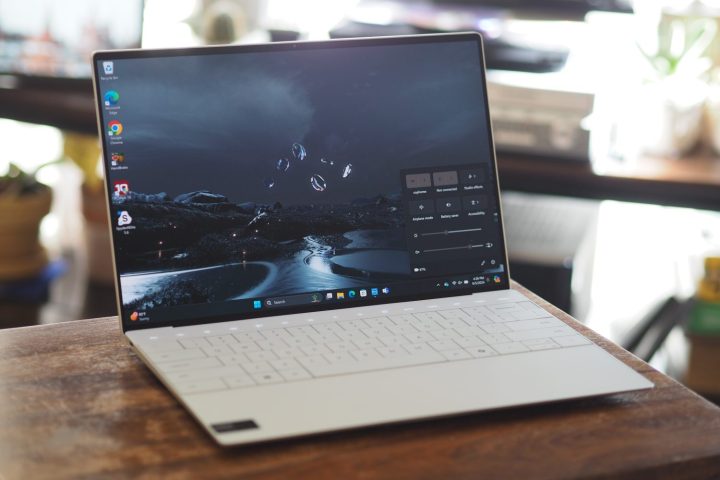 Dell XPS 13 2024 front angled view showing display and keyboard.Image: Mark Coppock / MaagX
Dell XPS 13 2024 front angled view showing display and keyboard.Image: Mark Coppock / MaagX
While 14-inch laptops have gained popularity, the 13-inch form factor remains relevant. The XPS 13 represents a modern take on this size. It mirrors the XPS 13 Plus, which introduced Dell’s current XPS design philosophy, also seen in the XPS 14 and XPS 16.
The standout features are primarily internal. Externally, the all-aluminum chassis maintains the sleek angles and platinum and graphite color options of previous XPS models. Inside, however, is a different story. The zero-lattice keyboard, all-glass palm rest with a hidden haptic touchpad, and LED touch function keys give the XPS 13 a futuristic feel. Combined with the thinnest bezels on a laptop, the Dell embodies contemporary design.
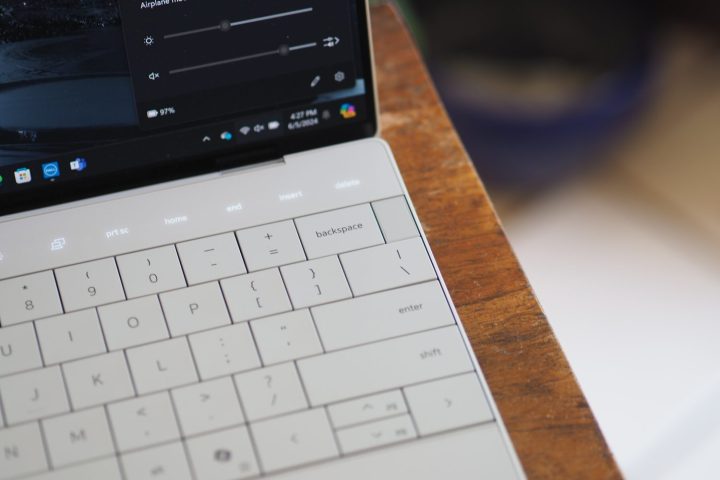 Dell XPS 13 2024 top down view showing LED function keys.Image: Mark Coppock / MaagX
Dell XPS 13 2024 top down view showing LED function keys.Image: Mark Coppock / MaagX
These features are not without controversy, and their usefulness depends on the XPS laptop’s size. The keyboard and LED function keys primarily reduce thickness, crucial for the XPS 13. However, the hidden haptic touchpad is less effective on the smaller XPS 13, as it’s easier to overshoot the edges when swiping. While the keyboard and function keys are understandable, the touchpad seems to prioritize aesthetics over functionality.
That said, the XPS 13 is visually appealing. Its small size, reasonable thinness, and density contribute to a premium feel. This is comparable to the MacBook Air 13, which is remarkably thin but similar in weight and density. Both laptops convey a sense of quality. The XPS 13’s chassis is exceptionally rigid, and its lid is even sturdier than the MacBook’s. Its build quality justifies the premium price.
Keyboard and Touchpad
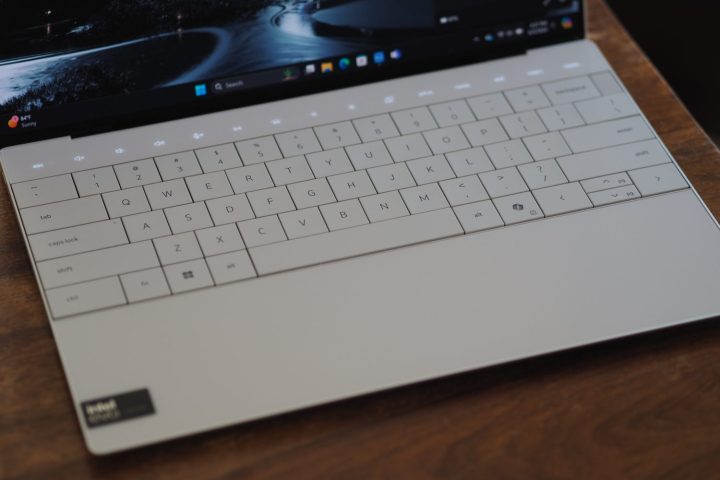 Dell XPS 13 2024 top down view showing keyboard and touchpad.Image: Mark Coppock / MaagX
Dell XPS 13 2024 top down view showing keyboard and touchpad.Image: Mark Coppock / MaagX
The zero-lattice keyboard’s large keycaps and lack of spacing contribute to a unique typing experience. The shallow switches, comparable to the MacBook Air’s Magic Keyboard, provide snappy and precise feedback. After a brief adjustment period, I found the keyboard comfortable and efficient.
The LED touch function keys are the most contentious feature. While they likely save space, their lack of tactile feedback makes them difficult to use. It’s easy to accidentally activate a function or struggle to find the correct key. Haptic feedback would have been a significant improvement. Traditional function keys might have been a better choice.
The haptic touchpad is technically proficient and precise, but its hidden dimensions require practice. LED edge indicators would have been helpful, as I frequently overshot the edges even after extended use. The HP Spectre x360 14 offers a similar haptic touchpad, while the MacBook Air’s Force Touch touchpad is even better. The XPS 13’s touchpad falls short in comparison.
The availability of a touch display is a welcome feature, although it requires choosing one of the two more expensive and power-consuming display options.
Connectivity and Webcam
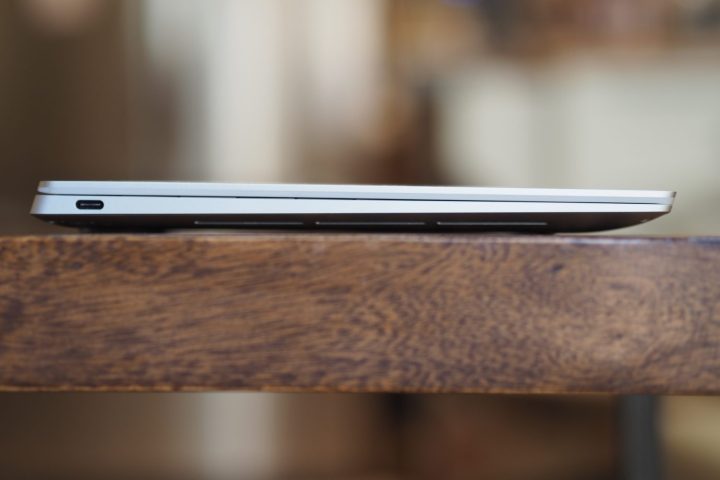 Dell XPS 13 2024 left side view showing ports.
Dell XPS 13 2024 left side view showing ports.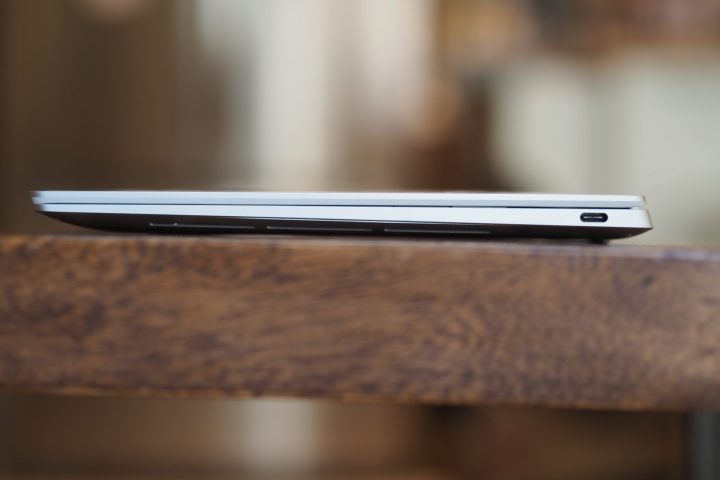 Dell XPS 13 2024 right side view showing ports.
Dell XPS 13 2024 right side view showing ports.
The XPS 13’s two USB-C ports with Thunderbolt 4 are standard for modern ultrabooks, similar to the MacBook Air. However, the MacBook Air mitigates this limitation with a MagSafe 3 power connector, freeing up both USB-C ports, and includes a 3.5mm audio jack. The XPS 13 lacks both, a potential deal-breaker for some. The edge-to-edge keyboard likely contributes to this omission, though the XPS 14 and 16 manage to incorporate an audio jack.
The cutting-edge Wi-Fi 7 and Bluetooth 5.4 connectivity are definite pluses.
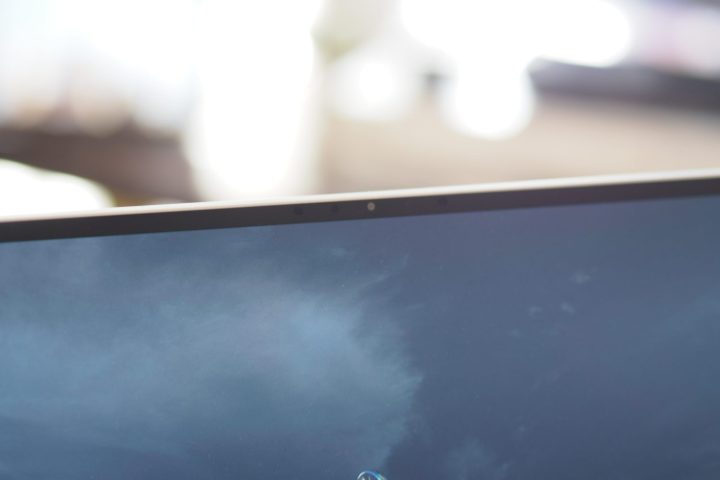 Dell XPS 14 2024 front view showing webcam.Image: Mark Coppock / MaagX
Dell XPS 14 2024 front view showing webcam.Image: Mark Coppock / MaagX
The 1080p webcam with infrared for Windows 11 Hello facial recognition is impressive, especially given the thin bezels. Apple’s MacBook Air requires a notch to accommodate similar technology and has wider bezels. The XPS 13 also features a reliable fingerprint reader integrated into the power button.
The XPS 13 includes a neural processing unit (NPU) supporting on-device AI features like Microsoft Studio Effects, which provides hardware-accelerated background blurring. However, the Intel Meteor Lake NPU operates at approximately 10 TOPS, falling short of the 40 TOPS minimum requirement for Microsoft Copilot+. This places the XPS 13 behind the curve in AI capabilities, especially with the imminent release of Copilot+-enabled laptops.
Performance
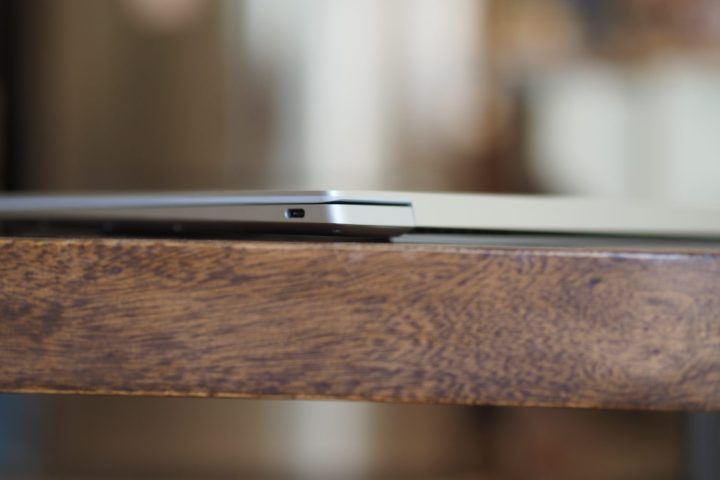 Dell XPS 13 2024 rear view showing edge and vents.Image: Mark Coppock / MaagX
Dell XPS 13 2024 rear view showing edge and vents.Image: Mark Coppock / MaagX
The XPS 13 currently ships with the 28-watt Intel Core Ultra 7 155H, boasting 16 cores (six Performance, eight Efficient, and two Low Power Efficient) and 22 threads. It’s a powerful chipset for demanding productivity tasks. The integrated Intel Arc graphics are improved over previous generations but not sufficient for creators or gamers.
Benchmark results indicate the XPS 13 performs well within expectations for the chipset, delivering snappy performance. While the PCMark 10 Complete score was slightly lower than some competitors, enabling performance mode (which increases fan noise) resolves this. Balanced mode is sufficient for most tasks, and the XPS 13 doesn’t run as hot as the XPS 13 Plus, likely due to the Core Ultra’s improved efficiency.
| Benchmark | Dell XPS 13 (Core Ultra 7 155H) | Acer Swift Go 14 (Core Ultra 7 155H) | Asus Zenbook 14 Q425 (Core Ultra 7 155H) | Lenovo Yoga 9i Gen 9 (Core Ultra 7 155H) | HP Spectre x360 14 (Core Ultra 7 155H) | Lenovo Yoga 9i Gen 8 (Core i7-1360P) | Asus Zenbook 14X OLED (Core i7-13700H) | Apple MacBook Air (M3) |
|---|---|---|---|---|---|---|---|---|
| Geekbench 6 (single/multi) | Bal: 2,109 / 11,134 Perf: 2,132 / 10,866 |
Bal: 2,269 / 12,007 Perf: 2,269 / 12,119 |
Bal: 2,257 / 11,820 Perf: 2,279 / 11,806 |
Bal: 2,396 / 14,270 Perf: 2,426 / 14,406 |
Bal: 2,185 / 11,123 Perf: 2,176 / 11,980 |
Bal: 2,509 / 10,746 Perf: 2,553 / 11,324 |
Bal: 2,501 / 11,991 Perf: 2,512 / 11,862 |
Bal: 3,102 / 12,078 |
| Handbrake (seconds) | Bal: 83 Perf: 82 |
Bal: 72 Perf: 69 |
Bal: 94 Perf: 82 |
Bal: 98 Perf: 81 |
Bal: 138 Perf: 83 |
N/A | N/A | Bal: 109 |
| Cinebench R23 (single/multi) | Bal: 1,649 / 9,311 Perf: 1,666 / 12,005 |
Bal: 1,760 / 13,315 Perf: 1,773 / 14,948 |
Bal: 1,706 / 8,684 Perf: 1,758 / 10,899 |
Bal: 1,802 / 10,576 Perf: 1,792 / 12,558 |
Bal: 1,750 / 9,832 Perf: N/A |
Bal: 1,846 / 8,779 Perf: 1,906 / 9,849 |
Bal: 1,819 / 11,066 Perf: 1,826 / 12,795 |
N/A |
| PCMark 10 Complete | 5,928 | 6,767 | 6,086 | 6,640 | 6,316 | 6,102 | 6,020 | N/A |
Battery Life
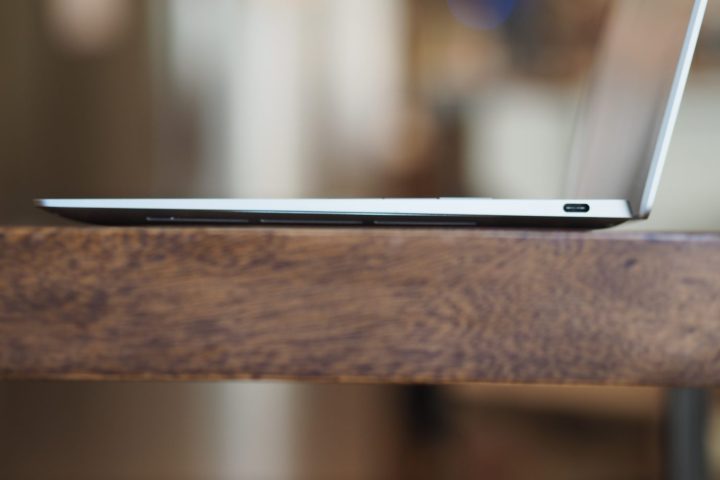 Dell XPS 13 2024 side view showing lid and port.Image: Mark Coppock / MaagX
Dell XPS 13 2024 side view showing lid and port.Image: Mark Coppock / MaagX
The upcoming Qualcomm Snapdragon X-powered Copilot+ version of the XPS 13 promises significantly better battery life. The Core Ultra 7 155H, despite Intel’s claims, hasn’t proven exceptionally efficient.
The XPS 13’s battery life is good but not exceptional. It achieved 7.25 hours in our web browsing test, which is respectable, but only eight hours in our video loop test, which is less impressive. My review unit’s high-resolution OLED display, the most power-hungry option, likely impacted the 55 watt-hour battery. The IPS display options likely offer longer battery life.
If exceptional battery life is a priority, the Copilot+ model is worth considering. However, if getting through most of a workday is sufficient, the current XPS 13 is adequate.
Display and Audio
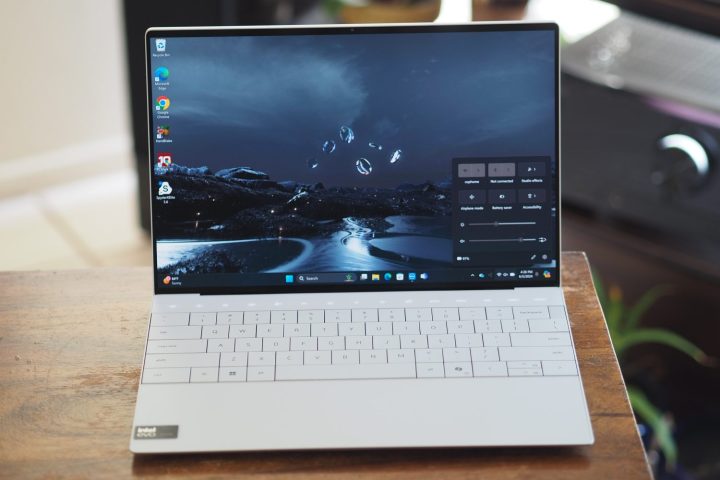 Dell XPS 13 2024 front view showing display and keyboard.Image: Mark Coppock / MaagX
Dell XPS 13 2024 front view showing display and keyboard.Image: Mark Coppock / MaagX
Dell offers two IPS display options: a 13.4-inch FHD+ (1920 x 1200) and a QHD+ (2560 x 1600) panel, both with a 120Hz refresh rate. The QHD+ display is touch-enabled. My review unit featured the 3K (2880 x 1800) OLED display with a 60Hz refresh rate. Its sharpness, vibrant colors, deep blacks, and accurate out-of-the-box calibration are impressive.
Colorimeter measurements confirm the OLED panel’s excellence. It covers 100% of sRGB, 95% of AdobeRGB, and 100% of DCI-P3, with a DeltaE of 0.92, indicating excellent color accuracy. The contrast ratio is a deep 16,500:1, with perfect blacks. The display’s brightness reaches 482 nits, ideal for HDR content.
This gives the XPS 13 a significant advantage over the MacBook Air 13, whose IPS display, while good, doesn’t match the XPS 13’s OLED quality. While the OLED display may impact battery life, it excels in all usage scenarios, especially media consumption.
The four-speaker audio system, with two upward-firing tweeters and two side-firing woofers, delivers surprisingly high volume, though some distortion occurs at maximum levels. Reducing the volume to around 80% eliminates the distortion while maintaining ample loudness. Mids and highs are clear, but bass is lacking. While adequate for a 13-inch laptop, headphones are recommended for action-packed content and music.
A Top 13-Inch Laptop, But the Clock is Ticking
The current XPS 13 remains available because it runs standard Windows 11 on Intel’s latest chipset, ensuring maximum compatibility and performance – at least until Intel’s Lunar Lake with a faster NPU arrives. However, it won’t offer the best battery life, a feature promised by the upcoming Qualcomm model. Even if you prefer Intel, waiting for the Copilot+ version and its reviews might be wise to assess potential price adjustments. Despite its quirks, the XPS 13 remains an excellent laptop in its current form.



